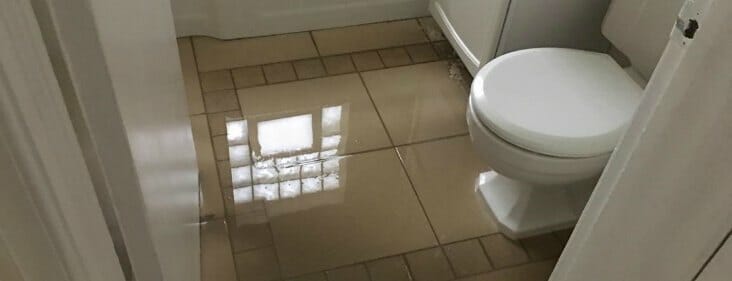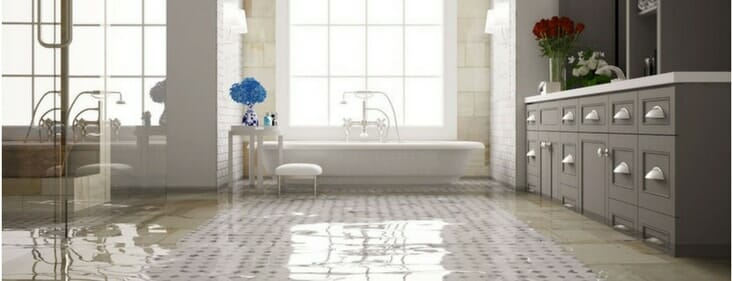Exactly How to Diagnose a Leaking Bathroom
Exactly How to Diagnose a Leaking Bathroom
Blog Article
Were you trying to find suggestions on How to Repair and Prevent Bathroom Water Damage??

Water damage frequently takes place in the restroom as a result of the water used day-to-day. In some cases, the damages could be a little mold from the shower. Various other times, it's massive damages on your flooring. Whatever it is, it is always excellent to know the reason and avoid it prior to it happens.
This overview will undergo several of the common sources of water damage in the bathroom. We will certainly additionally examine what you can do to avoid these reasons from damaging your shower room. Let's dive in.
These are the typical factors you would certainly have water damage in your restrooms and also just how you can spot them:
Excess Wetness
It's great to have that lengthy shower and splash water while you hem and haw and also imitate you're performing, however often these acts can create water damage to your bathroom.
Splashing water around can trigger water to visit edges and also form molds. View just how you spread excess wetness around, as well as when you do it, clean it up to stop damages.
Cracks in your wall ceramic tiles
Shower room wall surface tiles have been specifically created for that objective. They shield the wall from moisture from people taking showers. Nevertheless, they are not undestroyable.
Occasionally, your washroom wall surface floor tiles split and also permit some dampness to permeate right into the wall surface. This can possibly damage the wall surface if you do not take any type of activity. If you observe a fracture on your wall surface ceramic tiles, fix it right away. Don't wait until it damages your wall.
Overflowing toilets and sinks
As people, often we make errors that can create some water damage in the washroom. As an example, leaving your sink faucet on can create overruning and also damage to other parts of the bathroom with moisture.
Also, a faulty commode can create overruning. As an example, a damaged bathroom deal with or other parts of the tank. When this takes place, it can harm the floor.
As soon as you notice an overflowing sink or commode, call a plumbing professional to aid take care of it right away.
Burst or Leaking Pipes
There are numerous pipelines lugging water to various parts of your restroom. Some pipes take water to the commode, the sink, the faucets, the shower, as well as many various other areas. They crisscross the little area of the bathroom.
Occasionally, these pipelines might get corroded as well as burst. Various other times, human activity might cause them to leakage. When this occurs, you'll find water in the edges of your shower room or on the wall.
To detect this, keep an eye out for bubbling wall surfaces, mold and mildews, or mildew. Call a specialist emergency situation plumber to repair this when it occurs.
Roof Leakages
In some cases, the trouble of water damage to the restroom might not originate from the restroom. For example, a roofing leak can trigger damage to the shower room ceiling. You can find the damages done by taking a look at the water discolorations on the ceiling.
If you discover water stains on your ceiling, inspect the roof to see if it's harmed. Then, call an expert to help fix the issue.
Final thought
Water damage to your bathroom can be frustrating. However, you can manage it if you prevent a few of the reasons discussed in this overview. Call a professional emergency situation plumber if you observe any serious damages.
How to Prevent Water Damage in Your Bathroom?
Water damage repair is an expensive, meticulous, and lengthy process. Unfortunately, bathrooms are the most susceptible rooms to water damage due to toilets, showers, and sinks. Pipes and fixtures wear out over time and are not immune to damage. But all is not lost, as there are ways to prevent water damage from occurring in your bathroom.
Check Your Plumbing
Nothing lasts forever, especially pipes, which can rust and begin leaking over time. You should periodically conduct pipe inspections and pay attention for any musty smells or water stains that may indicate you need water damage repair. Here are some things to check:
Frequently test valves for your toilet, shower, and sink to ensure they are properly working. Check faucet supply lines hidden under vanities and replace when needed. Replace cracked or deteriorating caulking along sinks, tubs, and showers. If you notice a clog in your sink, call in a professional. Since you can’t check the pipes in the wall, keep an eye out for stains, drywall bubbling, musty smells, and excess moisture; if the bathroom is on a second level, check the ceiling of the room directly below for these signs. Don’t Overwork Your Toilet
One of the most common reasons bathrooms need water damage repair is due to overflowing toilets. Save yourself the hassle of cleanup by being mindful and not pushing your toilet to extreme limits. If you have young children, it is especially important to keep an eye on them when they are in the bathroom and to teach them how to avoid clogging the toilet. Here are some more tips to help prevent your toilet from overflowing:
If you have a septic tank, only use septic-safe toilet paper Do not flush anything down the toilet besides toilet paper; items like diapers and sanitary napkins will clog the piping Pay attention to your toilet’s water level: If it’s low, it could mean it is partially clogged or that there is a crack in the toilet bowl https://www.alure.com/home-improvements-blog/resources/how-to-prevent-water-damage-in-your-bathroom

We had been guided to that article on How to Repair and Prevent Bathroom Water Damage? through an acquaintance on our other domain. Are you aware of another person who is interested by the niche? Why not share it. Thanks a lot for your time. Come back soon.
Book With Us Today! Report this page